China # 12 – Heading towards Xi’an, City of the Terracotta Warriors – September 2014
Leaving Xiahe and the Labrang Tibetan Monastery, the scenery varied from terraced fields to more of those massive apartment buildings that appeared to be unoccupied. Road signs were a continuous amusement. Outside of Pingliang we were reminded that if there was any flat place bigger than half a basketball court, someone had planted something. By luck we managed to exit the toll road and found our way into a small rural village where we pulled off into a wide spot alongside the road for night. Quiet but raining, so poor Green opted to sleep in the cab again.
Odd Chinese Habit
Locals came out to inspect our vehicle and immediately wanted to clamber into the camper while we were eating dinner. Quickly, we pulled up the electric step. By now even Green was tired of explaining that this was our private home and we were not comfortable having so many visitors inside the camper. We were still amazed that this was apparently perfectly normal to do. One old woman was very upset “about our rudeness” and for quite some time, lamented loudly before retreating into the pouring rain.
Bin County Cave Temple
As we mentioned in our last Blog, we had not marked the Bin County Cave Temple on our maps, but when you have a guide as knowledgeable as Green, you listen to her advice. (Maybe she just wanted to see it!?) It turned out that the Bin County Cave Temple was an important stop on the Silk Road we were following. Started in the 5th century and completed in the 7th to the 10th centuries, it is located in the town of Chengguan, near Chang’an, the capital of Tang Dynasty, and contains the largest clay sculptured Buddhist figure in the area. Buddhism was introduced into China from India, possibly along the Silk Road.
In total there were 116 caves constructed on the sandstone cliffs that rose above the Jing River Valley. The caves were divided into five groups: Great Buddha Cave, Thousand-Buddha Cave, Arhat Cave, Monk’s Quarter Cave and Zhangba Buddha Cave, with a total of 466 niches and over 1,980 statues. Many of the caves were reached only by precarious foot holds carved in the sheer cliff. No, we did not see those!
Honestly, we were getting a little “Buddhaed-Out. We did find a reasonable hotel for Green, which she deserved, and there was good parking of us. It was Green’s turn to cook, she loved our kitchen, and that poor chicken we bought a few days ago met its final end. Green believed that eating the head would make you smart, so we gladly obliged her and the feet were apparently a delicacy in China as well. Our next destination was the much anticipated city of Xi’an, home of the famous Terracotta Warriors and the official end of The Silk Road.
- We were able to escape the highway and drive into a small village.
- When you are traveling in a self-contained vehicle all you need is a flat place on the side of the road. We found one.
- As we traveled further east, we were reminded that if there was any flat place bigger than half a basketball court, someone had planted something.
- Even the side of the road was a place to plant food.
- Road safety signs were amusing.
- Beautiful multi-story apartment buildings, many under construction, but often no sign of anyone living in them?? 60 Minutes called them “Phantom Cities”.
- The Yellow River looking a bit more true to its name here.
- Green houses were becoming more prevalent along the road.
- This coal power plant was adding to the layer of smog that we drove into.
- Bricks are very much the main form of construction. Every one of these bricks was hand stacked and will be hand transported to waiting mini-trucks and later to their final use on a building, one brick at a time. Cheap labor!!
- A road crew takes their lunch break very seriously.
- Bin County Cave Temple was an important stop on the Silk Road.
- 116 caves had been carved into the sandstone cliffs that rise above the Jing River Valley.
- Ceremonial drums may have been used for the call to prayer.
- Our guide, Green, did not tell us what this bell was used for.
- Statues decorated the inside of the main temple.
- Many of the caves were reached only by precarious foot holds carved in the sheer cliff. No, we did not see those!
- The fish and the lotus flower are frequently used in Buddhist designs.
- Many of the beautiful figures and statues seem to have been carved out of the solid sandstone walls of the caves. Colors looked like they were original.
- Remember that chicken we bought back a few days ago?
- It was Green’s turn to cook and she insisted on getting the chicken head. Eating it would make her smarter.



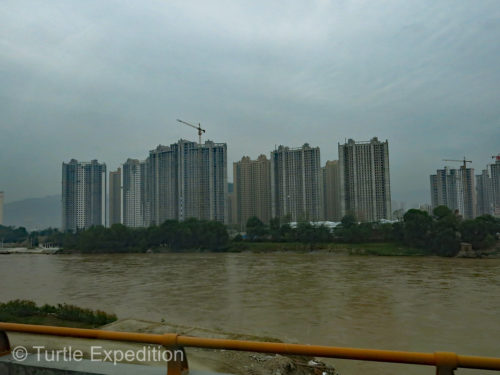
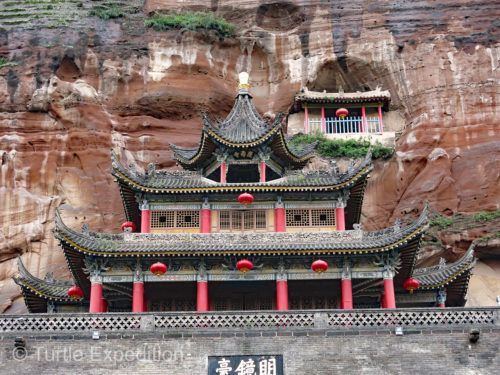
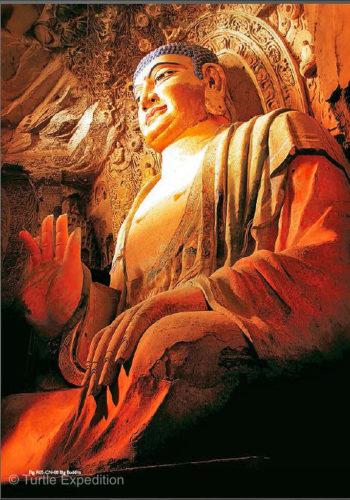
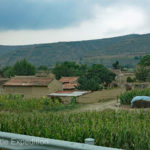
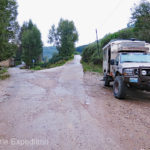
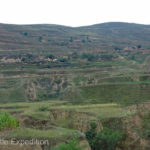
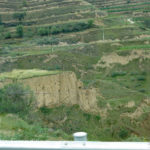
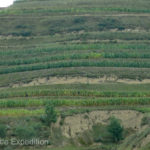
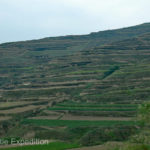
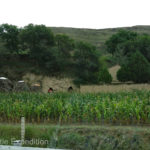
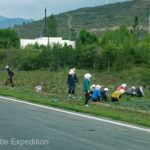
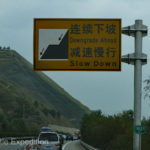
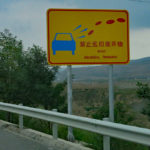
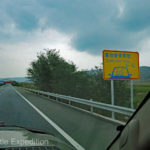
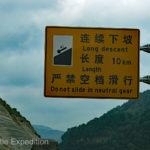
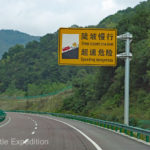
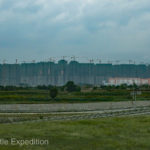
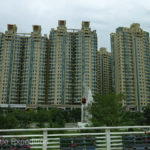
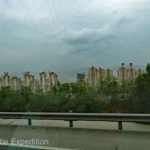
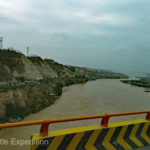
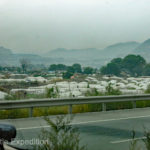
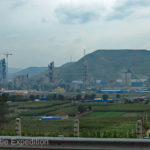
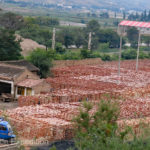
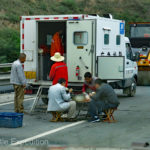
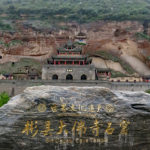
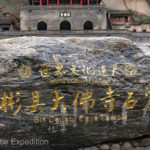
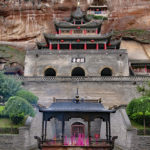
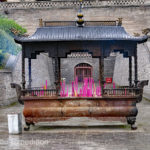
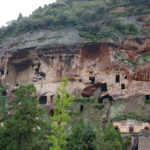
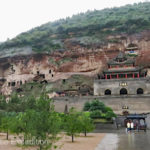
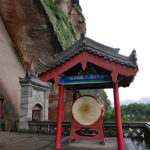
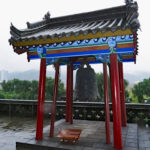
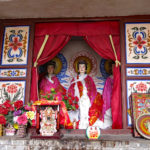
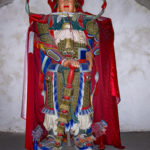
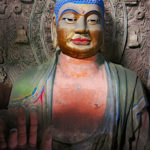
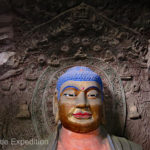
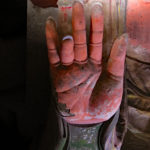
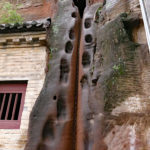
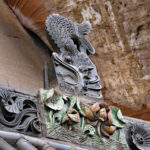
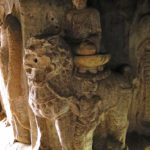
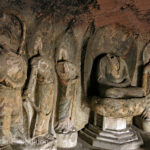
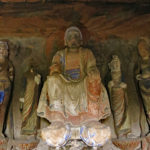
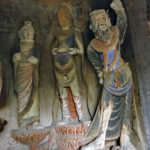
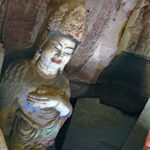
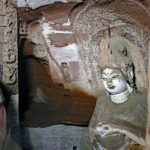
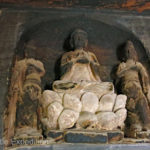
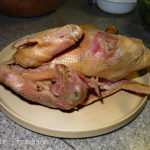
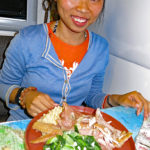
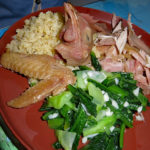








Leave a Comment